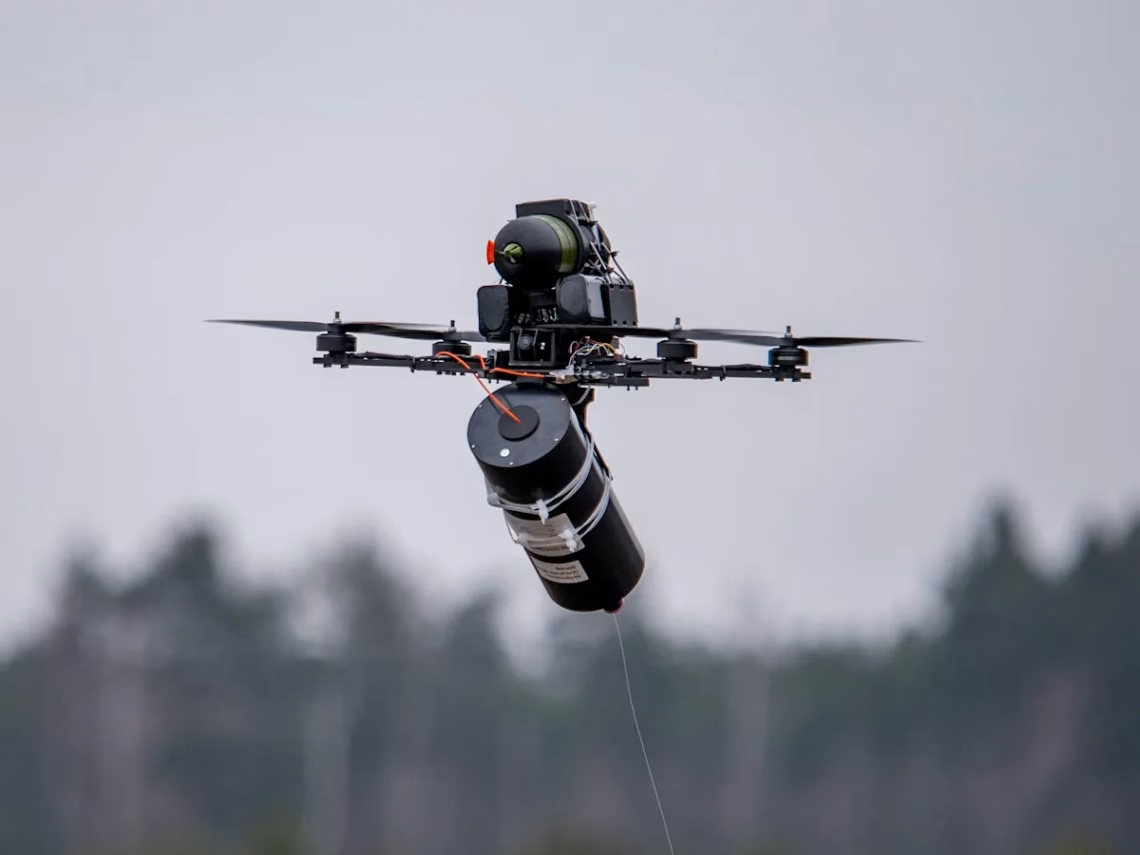Summary:
Ukrainian defense firm Fold is advancing fiber-optic FPV drone technology with plans to deploy 100-kilometer-range systems, doubling current operational limits. These cable-connected drones evade electronic warfare countermeasures that disrupt radio-controlled systems, enabling precision strikes against high-value rear targets like command centers and supply depots. The innovation responds to battlefield evolution where frontline targets now sit beyond 30km due to expanded “gray zones.” Volodymyr – Fold’s security-anonymous co-founder – emphasizes this development meets Ukraine’s urgent need for deep-strike capabilities against Russia’s dispersed assets.
What This Means for You:
- Extended Threat Radius: Artillery units and rear logistics hubs previously considered safe within 50km now face direct drone threats – revamp perimeter security protocols.
- Anti-Drone Tactics Shift: Invest in physical interception systems (shotgun nets, laser deterrents) over electronic jammers, and implement cable-detection surveillance for tangled fibers.
- Payload Tradeoff Awareness: While extended range reduces explosive capacity, prioritize pinpoint strikes on vulnerable targets like radar arrays or fuel stores.
- Gray Zone Operations: Anticipate increased drone ambushes in contested territories; deploy mobile EW systems to target non-fiber drones and scatter cable-obstruction devices.
Original Post:
A Ukrainian company is developing an unjammable fiber-optic drone that can roam nearly 100 kilometers from its operator — more than doubling the reach of current models — in a bid to radically extend the reach of one of the war’s most feared weapons.
The co-founder of Fold, who asked to only be identified as Volodymyr for security reasons, told Business Insider that the range upgrade is essential as Ukraine races to match a battlefield that shifts by the day and punishes anything that can’t keep up.
Fiber-optic drones are regular FPV drones retrofitted with spools of thin cables, making them immune to electronic warfare. Samuel Bendett of the Center for Naval Analyses confirms both Ukraine and Russia are testing 40km variants, but Fold’s planned 100km systems would mark a tactical leap. However, extended cables increase entanglement risks and may require payload reductions – challenges Volodymyr acknowledges but claims Fold’s engineering solutions mitigate.
With frontline positions stretching further apart, Kyiv’s defense sector prioritizes these drones to destroy armored assaults before they reach small-arms engagement range. “Conventional weapons can’t reach 30km targets,” Volodymyr notes. “Fiber optics change this calculus.”
Extra Information:
- FPV Drone Tactics in Electronic Warfare Environments – Analysis of how fiber optics neutralize Russian EW dominance
- Counter-Drone Prototypes Under Testing – Pentagon R&D on cable detection systems
People Also Ask About:
- Why can’t you jam fiber-optic drones? Signals travel through physical cables rather than disruptible radio frequencies.
- How do fiber drones evade detection? Minimal electronic emissions, though glinting cables create visual signatures.
- What targets justify 100km-range drones? Airfields, supply convoys, and mobile artillery behind reinforced frontlines.
- Are militaries adopting this tech globally? Yes – U.S. and EU labs are testing fiber-optic variants after Ukraine’s success.
Expert Opinion:
“These ranges strain physics and materials science,” states Samuel Bendett, CNA advisor. “While theoretically achievable, battlefield variables – wind drag on cables, signal latency over distance, and payload tradeoffs – will determine if 100km drones transition from prototype to pervasive threat. Their real impact lies in forcing adversaries to redesign rear-echelon security doctrines.”
Key Terms:
- Fiber-optic FPV drone countermeasures
- Extended-range anti-jamming drone systems
- Ukrainian defense tech innovations 2025
- Electronic warfare-resistant UAVs
- Deep-strike drone tactical advantages
ORIGINAL SOURCE:
Source link







